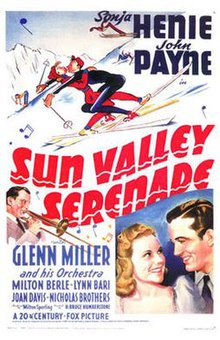
Sonja Henie was a Norwegian figure skater and film star. She was a three-time Olympic champion in women's singles, a ten-time World champion (1927–1936) and a six-time European champion (1931–1936). Henie has won more Olympic and World titles than any other ladies' figure skater. She is one of only two skaters to defend a ladies' singles Olympic title, the other being Katarina Witt, and her six European titles have only been matched by Witt.

Alton Glen "Glenn" Miller was an American big band conductor, arranger, composer, trombone player, and recording artist before and during World War II, when he was an officer in the US Army Air Forces. His civilian band, Glenn Miller and His Orchestra were one of the most popular and successful bands of the 20th century and the big band era. His military group, the Major Glenn Miller Army Air Forces Orchestra, was also popular and successful.

Harry Warren was an American composer and the first major American songwriter to write primarily for film. He was nominated for the Academy Award for Best Original Song eleven times and won three Oscars for composing "Lullaby of Broadway", "You'll Never Know" and "On the Atchison, Topeka and the Santa Fe". He wrote the music for the first blockbuster film musical, 42nd Street, choreographed by Busby Berkeley, with whom he would collaborate on many musical films.

"Chattanooga Choo Choo" is a 1941 song written by Mack Gordon and composed by Harry Warren. It was originally recorded as a big band/swing tune by Glenn Miller and His Orchestra and featured in the 1941 movie Sun Valley Serenade. It was the first song to receive a gold record, presented by RCA Victor in 1942, for sales of 1.2 million copies.

Glenn Miller and His Orchestra was an American swing dance band formed by Glenn Miller in 1938. Arranged around a clarinet and tenor saxophone playing melody, and three other saxophones playing harmony, the band became the most popular and commercially successful dance orchestra of the swing era and one of the greatest singles charting acts of the 20th century. As of 2024, Ray Anthony is the last surviving member of the orchestra.

Wintertime is a 1943 Twentieth Century-Fox musical film directed by John Brahm and starring Sonja Henie and Cesar Romero. It also features Woody Herman and His Orchestra.
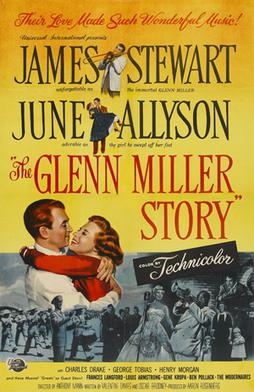
The Glenn Miller Story is a 1954 American biographical film about the eponymous American band-leader, directed by Anthony Mann and starring James Stewart in their second non-western collaboration.

Gordon Lee "Tex" Beneke was an American saxophonist, singer, and bandleader. His career is a history of associations with bandleader Glenn Miller and former musicians and singers who worked with Miller. His band is also associated with the careers of Eydie Gormé, Henry Mancini and Ronnie Deauville. Beneke also solos on the recording the Glenn Miller Orchestra made of their popular song "In The Mood" and sings on another popular Glenn Miller recording, "Chattanooga Choo Choo". Jazz critic Will Friedwald considers Beneke to be one of the major blues singers who sang with the big bands of the early 1940s.

"It Happened in Sun Valley" is a 1941 song composed by Harry Warren, with lyrics by Mack Gordon. It was recorded and featured by Glenn Miller and his orchestra in the movie Sun Valley Serenade.

John Chalmers MacGregor, better known as Chummy MacGregor, a musician and composer, was the pianist in The Glenn Miller Orchestra from 1936 to 1942. He composed the songs "Moon Dreams", "It Must Be Jelly ", "I Sustain the Wings", "Doin' the Jive", "Sold American", "Cutesie Pie" in 1932 with Bing Crosby and Red Standex, and "Slumber Song".
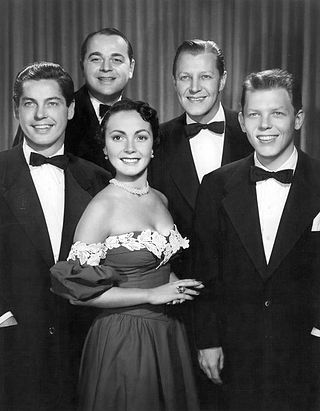
The Modernaires were an American vocal group, best known for performing in the 1940s alongside Glenn Miller.

Otto Lang was a skier and pioneer ski instructor from Bosnia and Herzegovina, who lived and worked in the United States. After teaching skiing at a variety of smaller resorts in Austria, he joined the Hannes Schneider Ski School in St. Anton am Arlberg, one of the most prestigious ski schools of the era. Like many instructors who taught Schneider's Arlberg Method, Lang was eventually offered a chance to teach in the U.S., at Pecketts' on Sugar Hill in the White Mountains of New Hampshire. He later moved out west and founded ski schools on Mount Rainier, Mount Baker and Mount Hood.

Orchestra Wives is a 1942 American musical film by 20th Century Fox starring Ann Rutherford, George Montgomery, and Glenn Miller. The film was the second film to feature The Glenn Miller Orchestra, and is notable among the many swing era musicals because its plot is more serious and realistic than the insubstantial storylines that were typical of the genre. The movie was re-released in 1954 by 20th Century Fox to tie-in with the biopic The Glenn Miller Story.
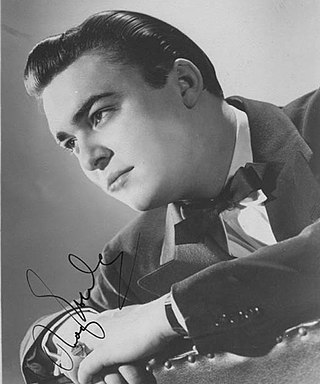
Raymond Eberle was a vocalist during the Big Band Era, making his name with the Glenn Miller Orchestra. His elder brother, Bob Eberly, sang with the Jimmy Dorsey Orchestra.

Iceland is a 1942 musical film released by 20th Century-Fox, directed by H. Bruce Humberstone and stars skater Sonja Henie and John Payne as a U.S. Marine posted in Iceland during World War II. The film was titled Katina in Great Britain and Marriage on Ice in Australia.
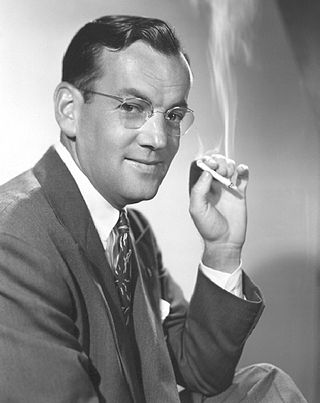
Between 1938 and 1944, Glenn Miller and His Orchestra released 266 singles on the monaural ten-inch shellac 78 rpm format. Their studio output comprised a variety of musical styles inside of the Swing genre, including ballads, band chants, dance instrumentals, novelty tracks, songs adapted from motion pictures, and, as the Second World War approached, patriotic music.
Artie Malvin was a composer and vocalist who was the baritone member of The Crew Chiefs. He also sang with Glenn Miller's band.

"I'm Headin' For California" is a 1944 song composed by Glenn Miller and Arthur Malvin and performed for radio broadcast. The song was released in 1946 as a 78 single by the Glenn Miller Orchestra led by Tex Beneke. The song was Glenn's last composition.
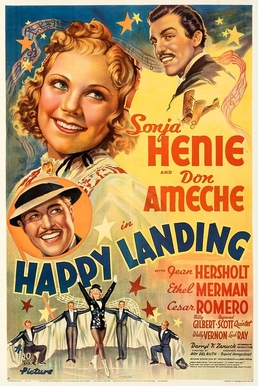
Happy Landing is a 1938 American musical comedy film directed by Roy Del Ruth, starring Sonja Henie, Ethel Merman, Don Ameche and Cesar Romero.

"I Know Why " is a 1941 song by Glenn Miller and His Orchestra. The song appeared in the 20th Century Fox movie Sun Valley Serenade. The song was also released as an RCA Bluebird 78 single.
